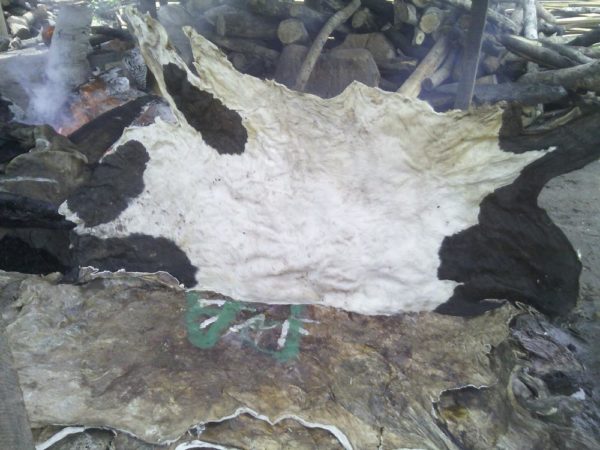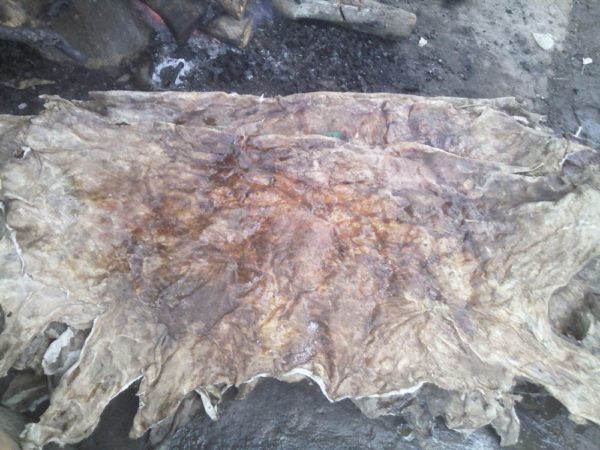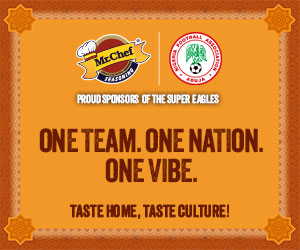Features
Bukunmi Ogunwale: How My Vacation Became a Learning Trip About Pomo Making
 I had decided a few days before Easter that I’ve had enough of Lagos. I needed the break; but I guess most Lagosians spent their Easter holiday in Lagos, because it took my bus more than three hours to fill up. It got to the point where the driver had to re-strategize when he realized there was no way he would get a full bus before night fall.
I had decided a few days before Easter that I’ve had enough of Lagos. I needed the break; but I guess most Lagosians spent their Easter holiday in Lagos, because it took my bus more than three hours to fill up. It got to the point where the driver had to re-strategize when he realized there was no way he would get a full bus before night fall.
Eventually after spending the first two hours with only three people on a twelve-seater bus, the driver decided to pick Ijebu Ode and Ijebu Igbo travelers. The wait was long but I was determined; sticking the long wait out like a he-goat that was bent on knocking down its handler.
On my arrival to Ijebu Igbo (Ijebu Igbo is one of the popular Ijebu towns in north east of Ogun State) at about 5pm, I was met by my friend – a former roommate in my university days. The holiday began but little did I know how quickly a well thought out holiday would end up having a moment of education and enlightenment.
Educating in that, for a Lagos based girl, there is little or nothing I know about how our local food is processed. Like really what is my own with how garri is made? Or where pomo comes from?
Okay so now I’m thinking that if you were not born in the village, there is a very high chance that you do not know how Pomo is processed too. Yea… especially the very popular Pomo Ijebu.
Many of us enjoy this as a standalone delicacy peppered pomo at joints or bought on our regular meals (for bukka people). Eateries slice Pomo in beans and other dishes. But have you ever wondered how this is made except for knowing the source is the hide of cows?
Well, to cut the long story short, my friend and I took a walk and as we passed through a line of sheds and I asked if this was a kitchen or some form of garri making factory.
She laughed so had, she could barely walk. I was confused. Certainly maybe I was not born or breed in the village, but I pride myself with learning so much from the internet about different stuff. But this was not one of the things I’ve learnt.
She then told me it was the Pomo factory of the west. She said: “this is where they make Pomo Ijebu.”
DELIVERY:
Pomo as we know is processed cow skin. Cow skin is delivered in batches to the site of processing. These skin is then covered with tarpaulin while it awaits processing.
BURNING:
The skin is burnt on firewood stove until all the hair is scrapped off the skin. Leaving the already dried cow skin shrunk and charcoal black.
BOILING:
The roasted skin is then transferred into a drum of boiling water and a big trunk of wood is placed over the drum to keep the skin inside the water. Usually the water turns black partly because of the burnt skin, and partly because of the half burnt firewood trunk. After a few minutes of boiling, the skin is taken out of the water.
CUTTING & DRYING:
The parboiled cow skin is cut in small pieces and then dried till there is no moisture in it.
It is usually shipped to Lagos in huge quantities like its dried form and market women will soak the Pomo in water overnight before displaying it for sale on the market.
Pomo may be condemned by some, hated by a few and loved by many, but it is one delicacy that has been a source of meat for millions of Nigerians. For some, it is merely a snack; for others, a whole meal; and for people like the resident Pomo makers of Ijebu Igbo, it is a source of livelihood.
My question thus far since my arrival is knowing this process, would I continue to eat Pomo with reckless abandon? Would you?
Photo Credit: Lead image – Foto.com.ng | Other images provided by author

























